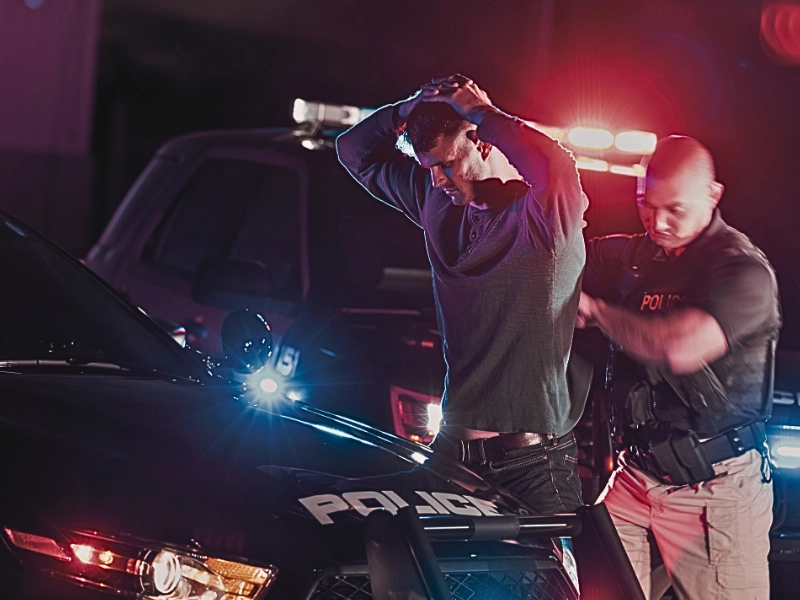Fentanyl is a powerful synthetic drug with a high risk for addiction. More potent than heroin, it can cause respiratory distress and death when taken in high doses or when combined with other substances, especially alcohol.
Table of Contents
Fentanyl: The New Deadly Drug
Fentanyl, a synthetic opioid drug, is much more potent than heroin and morphine- up to 100 times stronger. A lethal dose of heroin is equivalent to about 30 milligrams, while a 3-milligram dose of fentanyl is enough to kill an average-sized adult male. Fentanyl is primarily used a pain medication, but it can be used for anesthesia when mixed together with certain other medications. It is highly addictive with dangerous side effects that can cause death, especially when consumed with alcohol and other substances.
Fentanyl is available in a variety of forms including skin patches, injections, and lozenges that can be absorbed through the tissues inside the mouth. Common side effects of fentanyl include:
- Nausea and vomiting
- Diarrhea and constipation
- Mental confusion
- Drowsiness, sleepiness, and insomnia
- Headaches
- Abdominal pain
More serious side effects include: low blood pressure; respiratory depression; hallucinations; and addiction. Fentanyl produces more prolonged and more severe respiratory depression (difficulty breathing) than other opioid analgesics. As far back as 2006, the U.S. Food and Drug Administration (FDA) started investigating respiratory deaths by people who used fentanyl, but medical professional and the public were not warned of fentanyl risks until years later. In 2012, the FDA reported the deaths of 12 young children after they were exposed to fentanyl skin patches.
Fentanyl Overdose Risks
In 2015, Canada declared deaths from fentanyl overdose a public health crisis. In 2016, deaths from fentanyl overdose in Canada averaged two people every day. In 2017, the fentanyl death rate in Canada rose by 100 percent. In 2016, fentanyl caused over 20,000 deaths in the U.S., a rise of more than 500 percent over the past three years. According to the Centers for Disease Control, fentanyl accounted for one out of every three drug overdose deaths in 2016.
In Minnesota, fentanyl was responsible for over 25 percent of the state’s 395 opioid-related deaths in 2016, twice as many as in 2015. Minnesota health officials suspect that the actual number of fentanyl deaths may be even higher. When fentanyl is mixed with other substances, it’s more difficult to detect and not always listed on death certificates. Minnesota’s latest, most famous fentanyl victim was the musician Prince, who overdosed on pain pills that contained added amounts of fentanyl. State medical examiners concluded that Prince died from an accidental fentanyl overdose in 2016.
People who use drugs are often unaware that the heroin they’re using is laced with fentanyl, so when they inject their usual dose of heroin, they inadvertently get a deadly dose of fentanyl. Dealers often mix fentanyl into heroin to improve the potency and compensate for low-quality heroin, but their equipment is not professional enough to measure safe levels of the drug. Fentanyl that’s typically sold on the street is almost always made in a clandestine lab, making it less pure than the pharmaceutical version with effects that are much more unpredictable. Heroin and fentanyl look identical, and with dangerous street drugs, this can prove to be deadly.
Most fentanyl overdose deaths are tied to illicit forms of the drug that are manufactured in Mexico and China. Fentanyl is often hidden in pain pills, so it goes undetected by drug enforcement agents when it is brought into the U.S. or other countries. In 2013, U.S. drug enforcement teams and police officers uncovered hundreds of thousands of pills labeled Percocet and Norco that were filled with fentanyl, instead of legal drugs like oxycodone and hydrocodone. Since fentanyl is such as potent opioid painkiller, drug smugglers only need to pack their drugs with a small amount of fentanyl to provide users with a powerful high, but a tiny bit of fentanyl is often deadly for users. In 2013 and 2014, drug busts that turned up fentanyl rose by 426 percent.
Recreational use of fentanyl results in thousands of overdose drug fatalities each year, and the numbers continue to rise. Health officials have declared an opioid epidemic in America, and they are struggling to keep up with the alarming increase in fentanyl overdose deaths. Fentanyl is an extremely dangerous opioid drug, and even individuals who have a high tolerance to opiates due to heavy use or addiction are at high risk for overdose because the drug is so potent. Once it enters the body, it’s difficult to stop absorption, so overdose and death often occur quickly.






